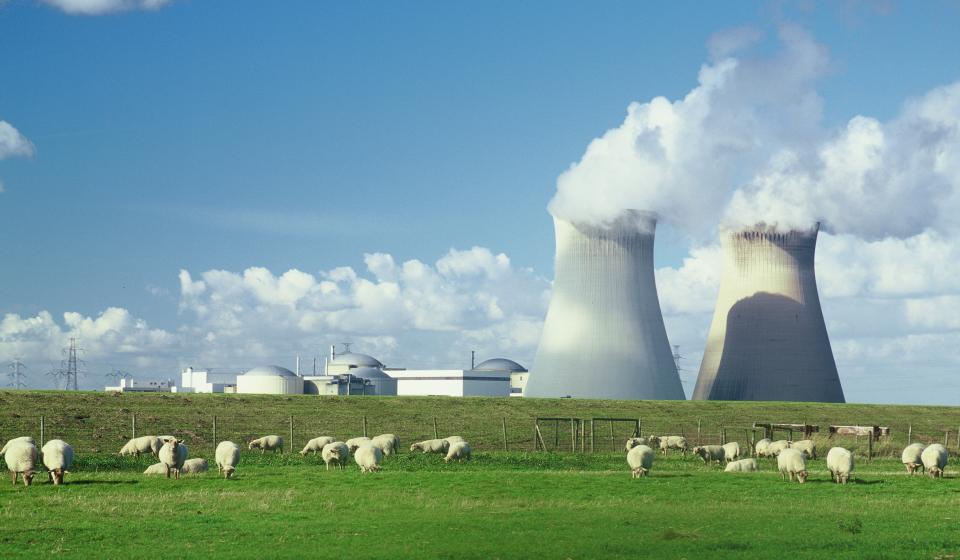Nuclear energy
Electrabel is responsible for the professional operation of Doel 4 and Tihange 3, as well as the safe shutdown and dismantling of the other units.
Visit our website dedicated to nuclear energy.
The use of nuclear energy for electricity production is an important factor for energy provision. Nuclear energy offers a range of advantages: economic, energetic and ecological (limitation of CO2-emissions).
- 24/7 electricity, practically 365 days a year
- Lower reliance on the big suppliers of fossil fuels (natural gas, coal, petroleum)
- No overuse of fossil fuels
- One of the cheapest sources of electricity in Belgium
- Electricity in large volumes and without CO2-emissions
- Reduced need for imported electricity
- Substantial direct and indirect employment opportunities
Short history
1960s: a suitable answer
Belgium deliberately chose electricity production which is partially reliant on nuclear energy; energy consumption was slowly but surely increasing and fossil fuels could no longer be regarded as the only option for fulfilling energy demands. From 1968 onwards, this policy was expressed in the construction of 4 nuclear power plants in Doel and 3 in Tihange. The vicinity of the River Scheldt and River Maas was ideal for supplying the cooling water required.
1975-1985: oil crisis and commissioning
The commissioning process of the first reactors (Doel 1, Doel 2, and Tihange 1) in 1975 couldn't have happened at a more opportune moment, as it reduced Belgium’s dependence on petroleum.
The construction of Doel 3 and Tihange 2 were completed in 1982 and 1983 respectively. The reactors Doel 4 and Tihange 3 followed shortly thereafter and were connected to the grid in 1985.
2000-2025: questions around the future of nuclear energy in Belgium
Under the 2003 nuclear phase out act, all nuclear plants are set to close by the end of 2025. On 9 January, however, ENGIE and the Belgian federal government signed an agreement (Heads of Terms and Commencement of LTO Studies Agreement), with a view to the 10-year extension of two nuclear reactors, Doel 4 and Tihange 3, with a total production capacity of 2 GW. Under this agreement, both sides confirm their intention of making every effort to restart the Doel 4 and Tihange 3 nuclear units by November 2026.
As for the other nuclear power plants: Doel 3 was shut down permanently on 23 September 2022, and Tihange 2 stopped production on 31 January 2023. Thanks to an earlier operating extension and associated investments and checks, the first three nuclear reactors, Doel 1 and 2 and Tihange 1, remained operational for an extra 10 years. In 2025, these were effectively taken off the grid.
How does a nuclear power plant with a pressurised water reactor (PWR) work?

Worldwide, there are 417 nuclear reactors in operation across 31 countries. They account for 10% of global electricity production (source: IAEA).
There are various types of nuclear reactors, including:
- PWR: pressurised water reactor (Tihange/Doel). Worldwide, 2 out of 3 reactors are PWR reactors.
- BWR: boiling water reactor (Fukushima)
- RBMK: graphite-moderated nuclear power reactor (Chernobyl)
A nuclear power plant with pressurised water (PWR), as found in Tihange and Doel, has 3 water circuits which are entirely separated from one another. The function in a nutshell:
- When uranium is split in the reactor, hot water is released; this then heats the water in the primary circuit.
- This water releases its heat in the steam generator in water for the secondary circuit, which is turned to steam as a result.
- This steam drives a turbine that is connected to an alternator which generates electricity.
- The steam which leaves the turbine is cooled in a condenser and converted into hot water which then flows to the steam generator. This cooling process uses cooling water from the third circuit which then heats up.
- The warm cooling water is then cooled in a cooling tower and some of the water vapour escapes at the top of the cooling tower.

- The reactor: a large vat in super-thick steel where the nuclear rods are located and heat is produced.
- The fissile materials: up to 4% enriched uranium, in the form of tablets, which are stacked in rods.
- The steam generators: exchange heat between the primary and secondary circuits. Thanks to these generators, the water and the steam in the secondary circuit never come into contact with the water in the primary circuit.
- The steam turbines: comprise various pressure units and rotate under the pressure of the steam.
- The alternator: converts mechanical energy into electricity.
- The transformers: increase voltage to 380 kV for minimal power loss during transport to consumers.
- The condenser: exchanges the heat from the steam with water from the third circuit. The steam then condenses into water again.
- The control room: here, all of the activities at the power plant, e.g. starting, stopping, modulating, etc. are controlled, regulated and managed 24 hours a day.
- The cooling tower: cools the heated water from the condenser by contact with a rising air flow; the plume of vapour therefore escapes the cooling towers.
Read more about the shutdown and dismantling of our nuclear power plants here.
Articles and press releases

ENGIE reconnects Doel 4 to the electricity grid on schedule and successfully completes a main objective of the Phoenix agreements

Closing of the agreement between ENGIE and the Belgian government
Our strategy to accelerate the energy transition

Code Red action: objectifying the debate
Among other things, the claim that ENGIE is the most polluting company in Belgium is factually incorrect. Code Red also made wrong assumptions about ENGIE's strategy and activities.
Below are some elements to counter their arguments: